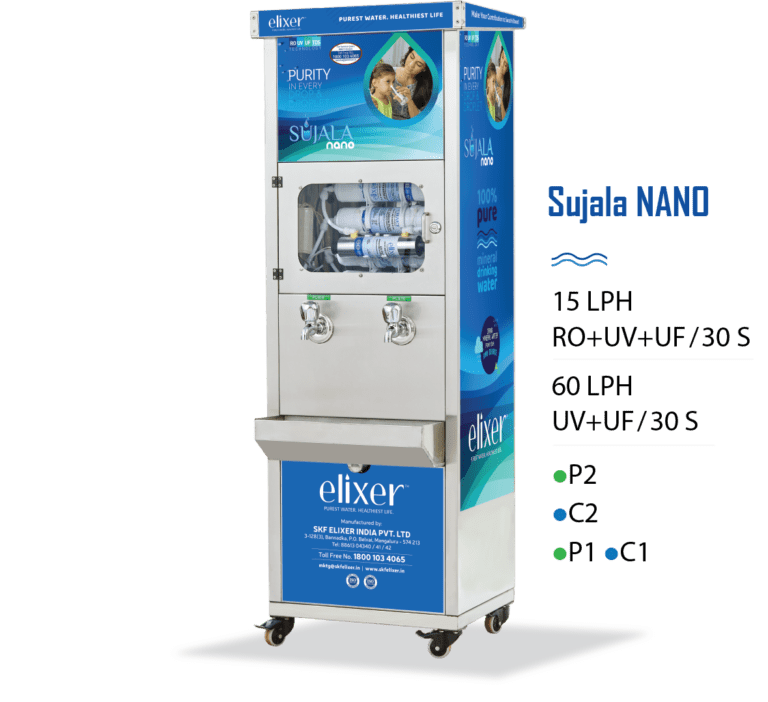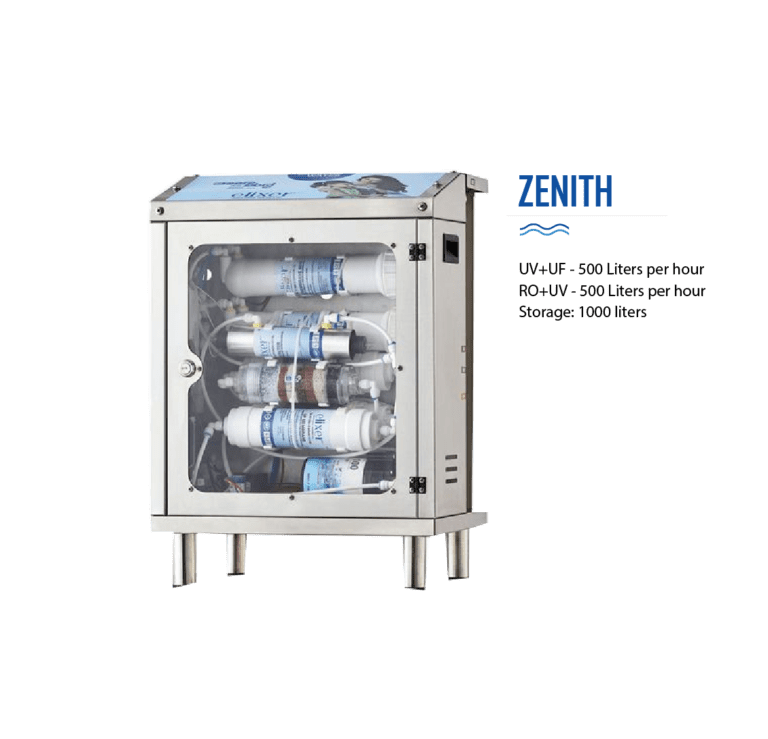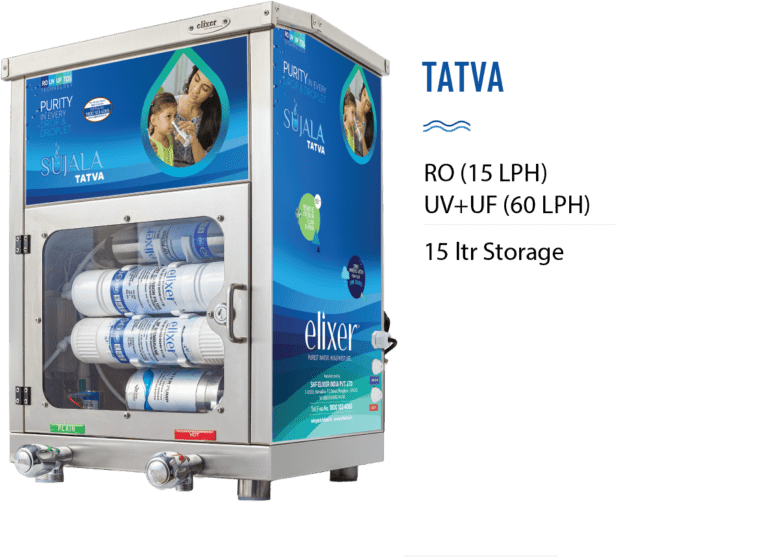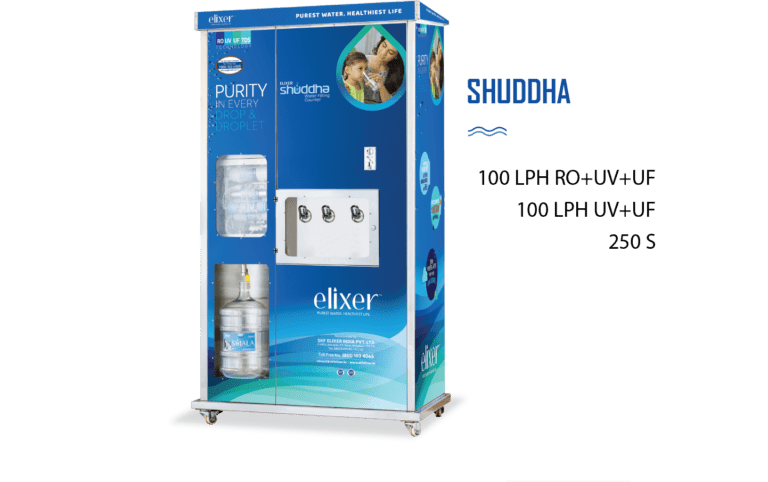Table of Contents
In India, the monsoon season brings relief from scorching summers, rejuvenating farmlands and filling reservoirs. Yet, it also ushers in a hidden threat, that is a surge in waterborne diseases that affect millions annually. With over 37 million cases of illnesses like diarrhea, typhoid, and cholera reported each year, the rainy season poses significant public health challenges.
At SKF Elixer, we address this issue with our advanced water purification systems, designed to deliver safe, clean drinking water tailored for India’s diverse urban and rural communities. Our solutions ensure protection against contaminated water, a key driver of monsoon diseases.
This blog explores the causes behind the rise in waterborne diseases during monsoons, their impact on communities, and how SKF Elixer’s water purifiers safeguard health and well-being. Whether you’re a homeowner in Mumbai, a school administrator in Uttar Pradesh, or a community leader in Assam, our insights will guide you toward effective water safety strategies during the rainy season.
The Monsoon-Waterborne Disease Connection
India’s monsoon, spanning June to September, brings heavy rainfall, flooding, and waterlogging, creating ideal conditions for waterborne diseases. These seasonal illnesses, including diarrhea, typhoid, and cholera, thrive due to water contamination and poor sanitation.
Waterborne diseases cause lakhs of illnesses annually, with monsoons contributing to 60–70% of cases. A single untreated water source in a village of 1,000 households can lead to health costs of ₹5–10 lakh yearly, while urban areas face similar risks due to overwhelmed municipal systems.
The causes of waterborne diseases during monsoons are rooted in environmental and infrastructural challenges. SKF Elixer’s water purification systems, equipped with advanced filtration technologies, offer a robust defense, ensuring safe drinking water even during the rainy season’s toughest conditions.
Key Causes of Waterborne Diseases During Monsoons
Several factors contribute to the spike in monsoon diseases, amplifying the risk of water contamination and illness:
- Contaminated Water Sources
Heavy rainfall causes runoff, carrying pollutants like sewage, pesticides, and industrial waste into rivers, lakes, and groundwater. In rural areas, 70% of water sources are contaminated during monsoons, with coliform bacteria levels reaching 1,000 MPN/100 mL. For a village consuming 10,000 litres daily, this can lead to 500–1,000 cases of diarrhea annually, costing ₹2–5 lakh in medical expenses.
- Sewage Overflows
Flooding overwhelms sewage systems, mixing wastewater with drinking water supplies. In urban areas like Delhi, 50% of municipal water sources allegedly show fecal contamination during monsoons, increasing typhoid cases by 40%. A single overflow event can contaminate 50,000–100,000 litres of water, posing risks to entire communities.
- Contaminated Food and Water
Monsoon humidity promotes bacterial growth in food and water storage systems. For example, a household storing 20 litres of water daily in unhygienic containers can face bacterial loads of 10^5 CFU/mL, leading to diarrhea outbreaks costing ₹5,000–₹10,000 per family annually in treatment.
- Poor Sanitation Infrastructure
In rural and semi-urban areas, access to proper sanitation is a must. Else, it could lead to open defecation and waterlogging. This spreads pathogens like Vibrio cholerae, causing cholera outbreaks that affect 1–2 lakh people yearly, with treatment costs of ₹50,000–₹1 lakh per community of 1,000.
- Stagnant Water and Mosquito Breeding
Waterlogged areas create breeding grounds for mosquitoes, indirectly exacerbating diseases like dengue, which, while not waterborne, compounds health risks during monsoons. This adds ₹2–3 lakh in healthcare costs for a small town.
Symptoms and Impact of Common Monsoon Diseases
- Diarrhea: Caused by pathogens like E. coli, symptoms include frequent loose stools, dehydration, and abdominal pain, affecting 20 million Indians annually. Treatment costs ₹2,000–₹5,000 per case.
- Typhoid: Symptoms of typhoid include high fever, weakness, and abdominal discomfort, caused by Salmonella typhi in contaminated water. Outbreaks cost ₹5,000–₹10,000 per patient, with 1–2 lakh cases during monsoons.
- Cholera: Triggered by Vibrio cholerae, it causes severe dehydration and can be fatal without treatment, costing ₹10,000–₹20,000 per case. Monsoons account for 60% of cholera cases.
How SKF Elixer’s Water Purifiers Prevent Monsoon Diseases
SKF Elixer’s water purification systems are designed to combat water contamination, ensuring safe drinking water during monsoons. Our multi-stage purification process includes:
- Pre-Filtration
Removes sediments and debris (2–3 grams per 1,000 litres), protecting downstream filters. For a 500-litre-per-day household system, this ensures clean water input, reducing maintenance costs by ₹1,000–₹2,000 annually.
- Reverse Osmosis (RO)
RO membranes reduce total dissolved solids (TDS) from 500–2,000 mg/L to 50–100 mg/L, removing heavy metals and salts. Our high-recovery RO systems save 100–200 litres daily for a 500-litre-per-day unit.
- UV Disinfection
UV purification delivers a 40 mJ/cm² dosage, eliminating 99.99% of bacteria and viruses like E. coli and Salmonella typhi. For a family consuming 20 litres daily, this prevents 50–100 illness cases annually, saving ₹5,000–₹10,000 in medical costs.
- Smart Monitoring
Sensors monitor water quality in real time, alerting users to contamination risks. This reduces downtime by 90%, saving ₹2,000–₹3,000 annually on repairs for a household purifier.
SKF Elixer’s Solutions for Monsoon Water Safety
Our water purifiers are tailored for India’s diverse needs:
- Household Systems: Compact 50–100-litre-per-day purifiers occupy 0.5 square meters and save ₹2,000–₹5,000 annually in health and operational costs, ideal for homes in Mumbai or Delhi.
- Community Systems: 500–1,000-litre-per-day units serve housing societies or schools, saving ₹50,000–₹1 lakh annually by preventing disease outbreaks.
- Rural Solutions: Affordable 1,000-litre-per-day systems support rural communities in Assam, reducing health costs by ₹2–5 lakh annually.
Preventing Cholera and Other Diseases
SKF Elixer’s purifiers prevent cholera, typhoid, and diarrhea by removing 99.9% of pathogens and contaminants. For a 500-unit housing society, this saves ₹5–10 lakh annually in healthcare costs. Additional prevention strategies include:
- Boiling Water: Costs ₹500–₹1,000 annually in fuel but is less reliable than purification.
- Hygiene Practices: Regular handwashing reduces disease risk by 30%, saving ₹2,000–₹5,000 per household.
- Sanitation Improvements: Community toilets, supported by government subsidies, reduce contamination risks.
Why Choose SKF Elixer?
With years of expertise, SKF Elixer delivers BIS-certified water purifiers designed for India’s monsoon challenges. Our systems ensure durability in high-TDS regions like Rajasthan, with options and AMCs starting at ₹2,000 per year.
From urban homes to rural communities, we provide clean, safe water year-round.
Conclusion
The surge in waterborne diseases during monsoons underscores the need for robust water purification solutions. SKF Elixer’s advanced purifiers, with RO, UV, and smart monitoring, protect against contaminated water, ensuring health and safety.
By choosing our systems, you can safeguard your community and contribute to a healthier India.
Ready to protect your family from monsoon diseases? Contact SKF Elixer to explore our tailored water purification solutions.
FAQs
-
Why do waterborne diseases increase during monsoons?
Heavy rainfall causes sewage overflows and runoff, contaminating water sources with bacteria like E. coli, leading to 60–70% of India’s 37 million annual waterborne disease cases, costing ₹5–10 lakh per 1,000 households in medical expenses.
-
What are the common waterborne illnesses during the rainy season?
Diarrhea, typhoid, and cholera spike during monsoons. Diarrhea affects 20 million people, typhoid causes 1–2 lakh cases, and cholera impacts 1 lakh, with treatment costs of ₹2,000–₹20,000 per case.
-
How does monsoon affect water quality?
Diarrhea, typhoid, and cholera spike during monsoons. Diarrhea affects 20 million people, typhoid causes 1–2 lakh cases, and cholera impacts 1 lakh, with treatment costs of ₹2,000–₹20,000 per case.
-
What causes typhoid outbreaks in monsoon?
Typhoid, caused by Salmonella typhi in contaminated water, surges due to sewage mixing with drinking water. SKF Elixer’s UV purifiers eliminate 99.99% of pathogens, saving ₹5,000–₹10,000 per household annually in treatment costs.
-
How can diarrhea be prevented during the rainy season?
Prevention includes using SKF Elixer’s RO and UV purifiers to remove 99.9% of contaminants, saving ₹2,000–₹5,000 per household annually. Hygiene practices and proper food storage further reduce risks by 30%.
Good reads are meant to be shared









